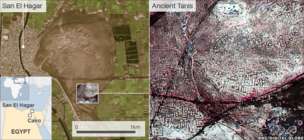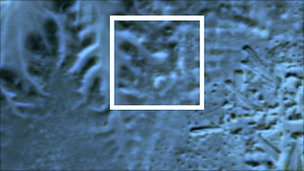BBC News | By Frances Cronin BBC News, May 24, 2011

Seventeen lost pyramids are among the buildings identified in a new satellite survey of Egypt.
More than 1,000 tombs and 3,000 ancient settlements were also revealed by looking at infra-red images which show up underground buildings.
Initial excavations have already confirmed some of the findings, including two suspected pyramids.
The work has been pioneered at the University of Alabama at Birmingham by US Egyptologist Dr Sarah Parcak.
She says she was amazed at how much she and her team has found.

“We were very intensely doing this research for over a year. I could see the data as it was emerging, but for me the “Aha!” moment was when I could step back and look at everything that we’d found and I couldn’t believe we could locate so many sites all over Egypt.
“To excavate a pyramid is the dream of every archaeologist,” she said.
The team analysed images from satellites orbiting 700km above the earth, equipped with cameras so powerful they can pin-point objects less than 1m in diameter on the earth’s surface.
Infra-red imaging was used to highlight different materials under the surface.
Test excavations
Ancient Egyptians built their houses and structures out of mud brick, which is much denser than the soil that surrounds it, so the shapes of houses, temples and tombs can be seen.
“It just shows us how easy it is to underestimate both the size and scale of past human settlements,” says Dr Parcak.
And she believes there are more antiquities to be discovered:
“These are just the sites [close to] the surface. There are many thousands of additional sites that the Nile has covered over with silt. This is just the beginning of this kind of work.”
BBC cameras followed Dr Parcak on her “nervous” journey when she travelled to Egypt to see if excavations could back up what her technology could see under the surface.









